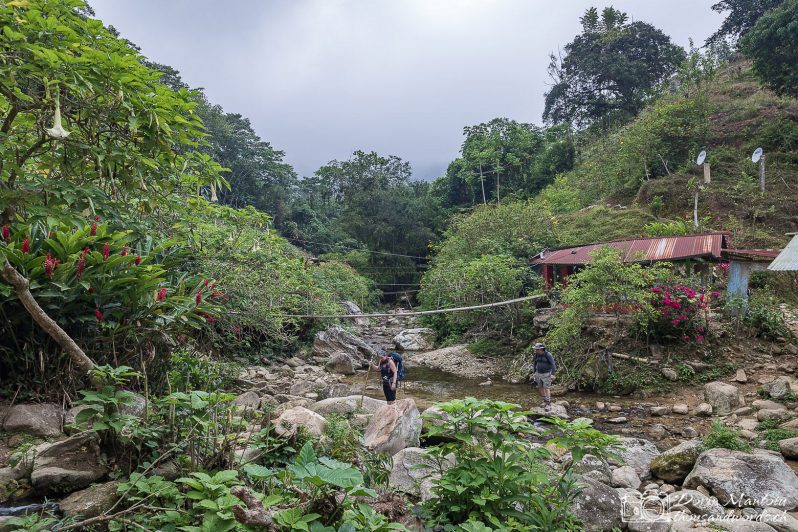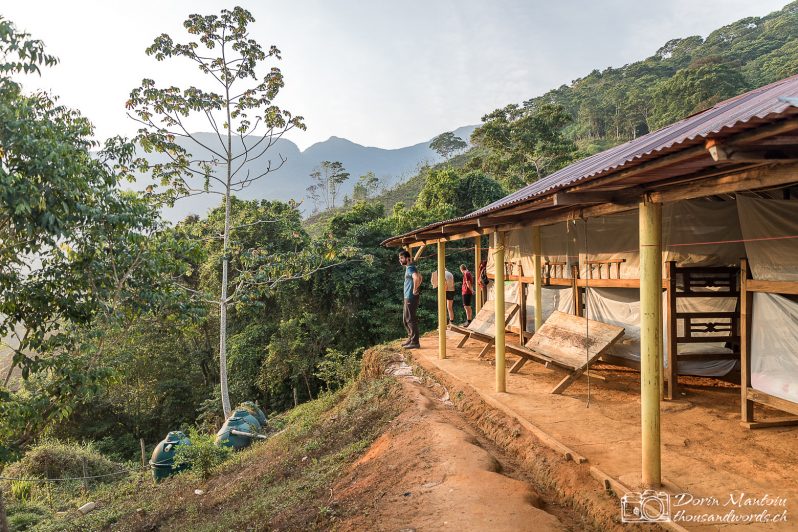Lost City Trek – Ciudad Perdida (part 1)
After a couple of relaxing days in Cartagena we moved to Santa Marta, the starting point for our amazing although exhausting four days trek to Ciudad Perdida (Lost City) with Expotur. With our group of 15 hikers and well guided by our guides Camacho & Santiago, we hiked for 7-8 hours a day, steep up, steep down and Colombian flat in between, which is up and down and down and up. It’s a beautiful hike through the Colombian hills and jungle, we absolutely loved it! So hot and humid though that sweat dripped down our noses and we could wring out our t-shirts. The evenings were spent in basic campsites, no more than a roof across the dirt floor, with wooden bunk beds covered in mosquito nets. Showers were cold, and toilets luckily to poorly lit to see them 😊 Santiago was the guide walking with the front group, doing the whole hike in his high top cons. I saw him only sweating once, after climbing an especially steep hill. On the last day he motivated us to walk even faster playing some awfully cheesy Latin music.
Ciudad Perdida lies deep in the Sierra Nevada mountains and can only be reached on foot. The last bit is climbing 1’200 steep and uneven stone steps early morning. It’s a beautiful and mystical place in the middle of the jungle. It was lost around the time of the Spanish conquests when they wiped out the indigenous population and only got rediscovered in 1970s by grave robbers. The city was built by the Tayrona people between the 11th and 14th centuries, though its origins are much older, going back to perhaps the 7th century. Spread over an area of about 2 sq km, it is the largest Tayrona city found so far; it was most probably their biggest urban center and their major political and economic center. Some 2’000 to 4’000 people are believed to have lived there. The houses themselves were made from wood and have long been gone, but the circular stone foundations can still be seen as well as the terraces and stairways between them. The Lost City is still considered a sacred place by the indigenous tribes in the Sierras. One evening we had a leader of the Kogi people joining us to talk about their customs and way of living, including the chewing of coca leaves mixed with grounded seashells allowing them to walk long distances in high altitudes and in cold temperatures. The excess spit is then whipped on the outside of the gourd used to store the seashells and builds up a thick ring around it. Which is meant to contain the experiences, thoughts and worries of the owner, the only way they record their knowledge as they have no written language.









